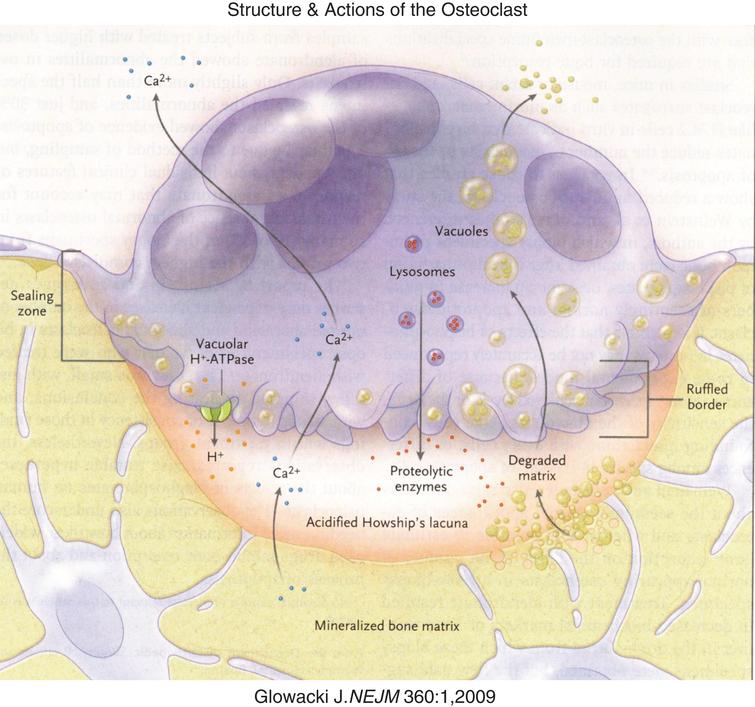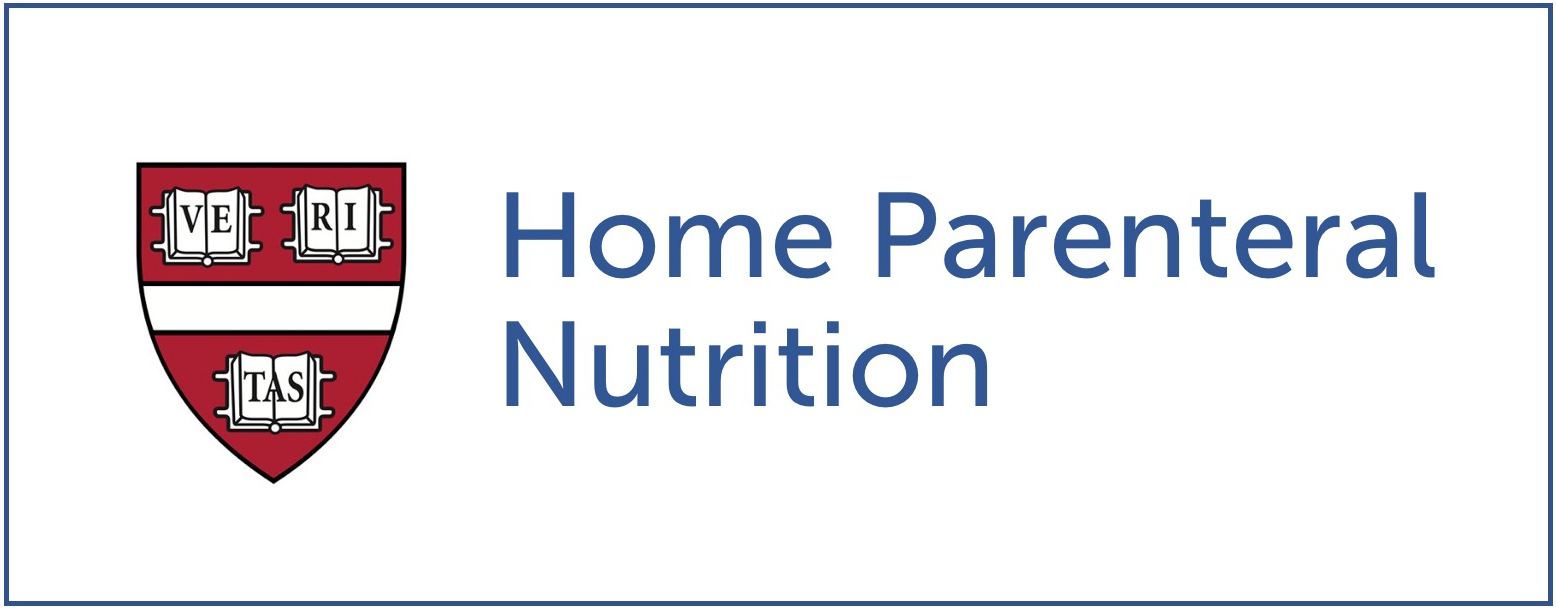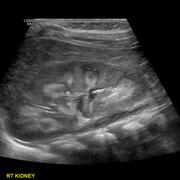Bone health
Prevention:
-
Vitamin is typically 400 IU/day from birth to 12 months of age independent of their mode of feeding
-
Beyond 12 months of age, all children and adults need 600 IU/day through diet and/or supplementation.
Clinical Features of Nutritional Rickets:
- Wrist ankle swelling
- Delayed fontanelle closure (normally by age 2 years-old)
- Delayed tooth eruption
- Leg deformity
- Rachitic rosary
- Frontal bossing
- Bone pain
- Hypocalcemic seizures and tetany
- Hypocalcemic dilated cardiomyopathy
- Failure to thrive
- Delayed gross motor development with muscle weakness
- Increased incracranial pressure

X-ray findings:
- Splaying, fraying, cupping, coarse trabecular pattern of metaphyses
- Widening of growth plate
- Osteopenia
- Skeletal deformities
- Fractures
SOCIAL MEDIA
From Home Parenteral Nutrition Program at Boston Children's Hospital Facebook Group on January 31, 2017
"Sports (like dance) are great for children/adults on HPN.
- Fun!
- Builds confidence.
- Weight bearing exercise = helps strengthen bones.
- Opportunity for socializing w/ peers.
Special thanks to HPN family for sharing photo of prima ballerina."
- Fun!
- Builds confidence.
- Weight bearing exercise = helps strengthen bones.
- Opportunity for socializing w/ peers.
Special thanks to HPN family for sharing photo of prima ballerina."

Monitoring:
- Check Vitamin 25-OH D twice per year (once during winter months): goal >30
- DXA scan starting at age > 5 (Endocrine consult for DXA Z-score >-2 or >2 unusual bone fractures)
- Repeat DXA every 2 years if normal.
- Repeat DXA yearly if abnormal.
- Bone age with every DEXA
- Until menarche in females
- Until conclusion of puberty in males
- Consider spinal X-ray for compression fractures (often asymptomatic)
If patients is identified with metabolic bone disease, consider the following work-up:
- Chem-10
- PTH
- iCal
- Alk Phos
- Urine Calcium
- Urine Creatinine
- Urine phosphote
- Vitamin D-25 OH and vitamin D 1,25 OH
Treatment:
- Calcium
- Maintain vitamin 25-0H D level > 30 (some say 50)
- Weight bearing activities
SOCIAL MEDIA
From Boston Children's Hospital's HPN Facebook Group on April 28, 2017 https://www.facebook.com/groups/HPNBostonChildrens/permalink/65893566097...
"Low bone mineral density common in children on HPN, but there's treatments available.
- Our HPN team can collaborate w/ bone experts to get latest tests/treatments, if needed.
- Link to recent article: http://bit.ly/2qnEBlP"
- Our HPN team can collaborate w/ bone experts to get latest tests/treatments, if needed.
- Link to recent article: http://bit.ly/2qnEBlP"

Vitamin D toxicity
- Serum vitamin 25-OH D >250 with hypercalcemia and suppressed PTH
- Usually due to high doses of vitamin D 240,000-500,000 IU
- Leads to hypercalcemia, hypercalciuria, nephrocalcinosis and renal failure
Diamanti A, Bizzarri C, Basso MS, Gambarara M, Cappa M, Daniele A, Noto C, Castro M. How does long-term parenteral nutrition impact the bone mineral status of children with intestinal failure? J Bone Miner Metab. 2010 May;28(3):351-8.doi: 10.1007/s00774-009-0140-0. Epub 2009 Dec 23. Erratum in: J Bone Miner Metab. 2010 May;28(3):359. Bizzarri, Claudia [corrected to Bizzarri, Carla]. PubMed PMID: 20033239
Ellegård L, Kurlberg G, Bosaeus I. High prevalence of vitamin D deficiency and osteoporosis in out-patients with intestinal failure. Clin Nutr. 2013 Dec;32(6):983-7. doi: 10.1016/j.clnu.2013.02.005. Epub 2013 Feb 21. PubMed PMID: 23481225.
Munns CF, Shaw N, Kiely M, Specker BL, Thacher TD, Ozono K, Michigami, Tiosano D, Mughal MZ, Mäkitie O, Ramos-Abad L, Ward L, DiMeglio LA, Atapattu N, Cassinelli H, Braegger C, Pettifor JM, Seth A, Idris HW, Bhatia V, Fu J, Goldberg G, Sävendahl L, Khadgawat R, Pludowski P, Maddock J, Hyppönen E, Oduwole A, Frew E, Aguiar M, Tulchinsky T, Butler G, Högler W. Global Consensus Recommendations on Prevention and Management of Nutritional Rickets. J Clin Endocrinol Metab. 2016 Feb;101(2):394-415. doi: 10.1210/jc.2015-2175. Epub 2016 Jan 8. Review. PubMed PMID: 26745253; PubMed Central PMCID: PMC4880117.
Poinsot P, Geoffroy P, Braillon P, Denis A, Loras-Duclaux I, Marotte S, Boutroy S, Bacchetta J, Touzet S, Lachaux A, Peretti N. Longitudinal Bone Mineralization Assessment in Children Treated With Long-Term Parenteral Nutrition for Severe Intestinal Failure. JPEN J Parenter Enteral Nutr. 2017 Mar 1:148607117701399. doi: 10.1177/0148607117701399. [Epub ahead of print] PubMed PMID: 28355492.

Parenteral Nutrition Calcium/Phosphate Ratio
- Ratio (mg) of 1.7:1 for patients with metabolic bone disease.
- All others try to keep ratio around 2:1 calcium (meq) to phosphorus (mmol)
Dietary Calcium Reference
|
|
Calcium
|
|
|
Life Stage Group
|
RDA
|
UL (mg/day)
|
|
0–6 months (M+F)
|
200c
|
1000
|
|
6–12 months (M+F)
|
260c
|
1500
|
|
1–3 yr (M+F)
|
700
|
2500
|
|
4–8 yr (M+F)
|
1000
|
2500
|
|
9–13 yr (M+F)
|
1300
|
3000
|
|
14–18 yr (M+F)
|
1300
|
3000
|
|
19–30 yr (M+F)
|
1000
|
2500
|
|
31–50 yr (M+F)
|
1000
|
2500
|
|
51–70 yr (M)
|
1000
|
2000
|
|
51–70 yr (F)
|
1200
|
2000
|
|
71+ yr (M+F)
|
1200
|
2000
|
|
Pregnant or lactating (F)
|
|
|
|
14–18 yr
|
1300
|
3000
|
|
19–50 yr
|
1000
|
2500
|
Ross AC, Manson JE, Abrams SA, Aloia JF, Brannon PM, Clinton SK, Durazo-Arvizu RA, Gallagher JC, Gallo RL, Jones G, Kovacs CS, Mayne ST, Rosen CJ, Shapses SA. The 2011 report on dietary reference intakes for calcium and vitamin D from the Institute of Medicine: what clinicians need to know. J Clin Endocrinol Metab.2011 Jan;96(1):53-8. doi: 10.1210/jc.2010-2704. Epub 2010 Nov 29. PubMed PMID: 21118827; PubMed Central PMCID: PMC3046611.
Kidney Stones
Kidney disease and nephrocalcinosis is common in children on long-term PN.
Nephrocalcinosis = calcium deposits in the medular pyramids that interferes with kidney growth.
Types of kidney stones:
- Calcium-oxalate
- Struvite
- Uric acid
- Other
Important risks for kidney stones in HPN patients:
- History of prematurity
- Exposure to lasix
- Exposure to nephrotoxins (antibiotics)
- Excessive calcium intake
- Excessive Vitamin D intake (remember fortification in neonatal formula)
- Fat malabsorption w/ colon present may lead to oxalate stones
- High vitamin C intake can contribute to oxalate stones, as it is a co-factor for oxate absorption.
- Family history of kidney stones.

Diagnostic Work-up of Kidney Stones:
- Check renal ultrasound
- May need abdominal CT if concerned about obstruction
- Vitamin 25-OH D
- Vitamin 1,25-OH D (high in tuberculosis, sarcoid, lymphoma)
- PTH (if inappropriately suppressed)
- Urinalysis for blood, pH, specific gravity
-
Urine calcium/creatitine ratio
- Urine sodium (goal >20 mmol/L)
- Urine magnesium
- Urine citrate (goal >300 mg/L)
Treatment
- Increase hydration.
- Increase acetate supplementation in PN or enterally.
- Sodium citrate, potasium citrate, sodium-potassium citrate (side-effect burping and diarrhea).
- Thiazide diuretic -- lowers urinary calcium concentration, increases urine potassium concentration.
- Citrus juices, such as lemonade, limaid, orange juice.
- Magnesium oxide/gloconate -- binds oxalate and phosphate (side-effect burping and diarrhea).
Monitoring:
- Yearly blood pressure.
- Yearly urinalysis.
- Renal ultrasound every 6-12 months to monitor kidney growth.
- Yearly renal consultation.
Boncompain-Gérard M, Robert D, Fouque D, Hadj-Aïssa A. Renal function and urinary excretion of electrolytes in patients receiving cyclic parenteral nutrition. JPEN J Parenter Enteral Nutr. 2000 Jul-Aug;24(4):234-9. PubMed PMID: 10885718.
Billing H, Traunspurger A, Sturm E, Busch A. High Incidence of Proteinuria in Children with Chronic Intestinal Failure Under Long-Term Parenteral Nutrition. J Pediatr Gastroenterol Nutr. 2017 Oct 27. doi: 10.1097/MPG.0000000000001814. [Epub ahead of print] PubMed PMID: 29077646.
Moukarzel AA, Ament ME, Buchman A, Dahlstrom KA, Vargas J. Renal function of children receiving long-term parenteral nutrition. J Pediatr. 1991 Dec;119(6):864-8. PubMed PMID: 1960600.


